‘It’s a superhighway above our heads’: South L.A. residents vexed by new LAX flight paths
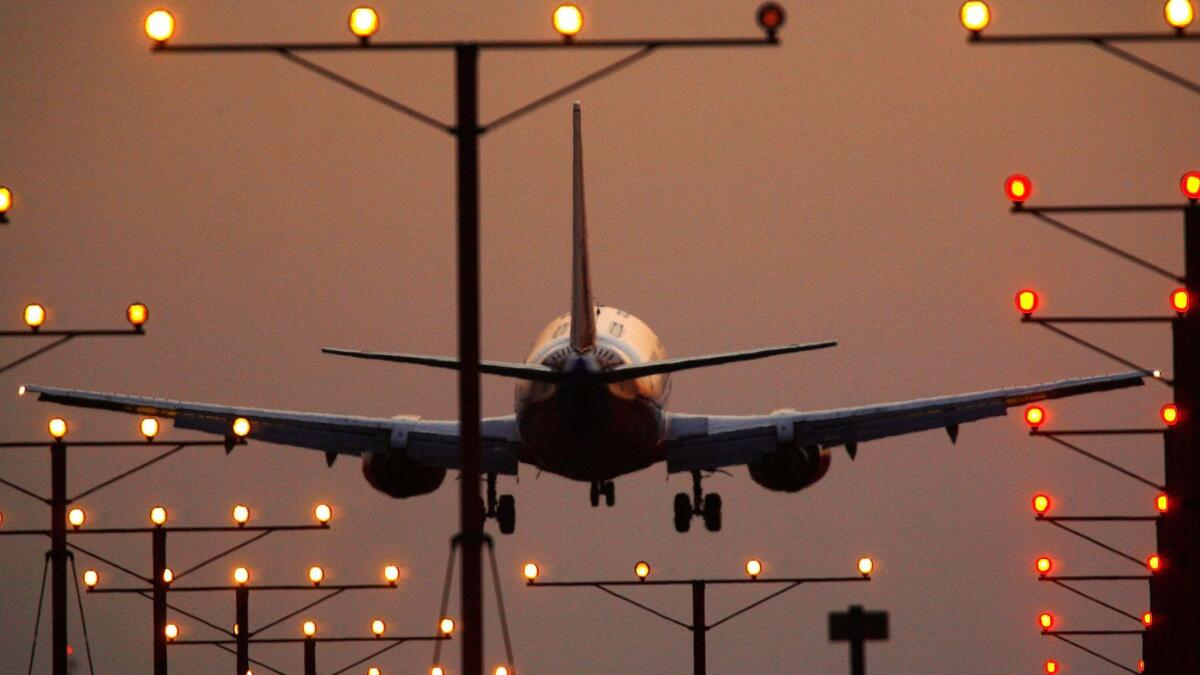
Thousands of people come every year to meditate and reflect at the Peace Awareness Labyrinth and Gardens, a South L.A. center that dubs itself “a spiritual oasis in the city.”
But this year, the tranquility of its green gardens and burbling fountains has been broken by a new and unwelcome sound: the repeated drone of passing jets and airplanes, often only minutes apart.
The noise has awoken and aggravated nearby residents, disrupted film shoots at the gardens and elsewhere, and spurred demands from local lawmakers for action.
And it hasn’t made it any easier to find inner peace.
“The other day it sounded like an airplane was coming down on the roof,” said Valerie Zumwalt, a student at the Jefferson Park seminary on the site.
Jefferson Park, West Adams and other stretches of South L.A. along Adams Boulevard are some of the neighborhoods affected by a shift in flight paths into Los Angeles International Airport and other busy airports across the nation, part of a federal effort to save fuel, reduce delays and improve safety. But by funneling air traffic into narrower, more concentrated routes, the new system has sent a steady stream of jets roaring over once-tranquil communities, residents said.
The rollout of the new system, known as the Southern California Metroplex, has drawn lawsuits from Newport Beach, Culver City and other cities. The changed routes in Southern California are part of a larger Federal Aviation Administration modernization program called NextGen, which has drawn complaints from Northern California to Maryland.
In Los Angeles, the redrawn routes have brought a torrent of complaints from South L.A. neighborhoods where skies were typically quiet. The busiest part of the flight path has shifted northward — and grown more concentrated. Since the latest changes were implemented in April, some residents say they hear passing planes every few minutes.
“They know exactly where planes are ... which increases safety. But for those people who live under that flight track, it increases misery on the ground,” said Jacqueline Hamilton, senior counsel to U.S. Rep. Karen Bass (D-Los Angeles), at a recent community forum.
Last month, there were more than 5,700 noise complaints in ZIP codes from West Adams to University Park — an area that had only a single complaint the previous September.
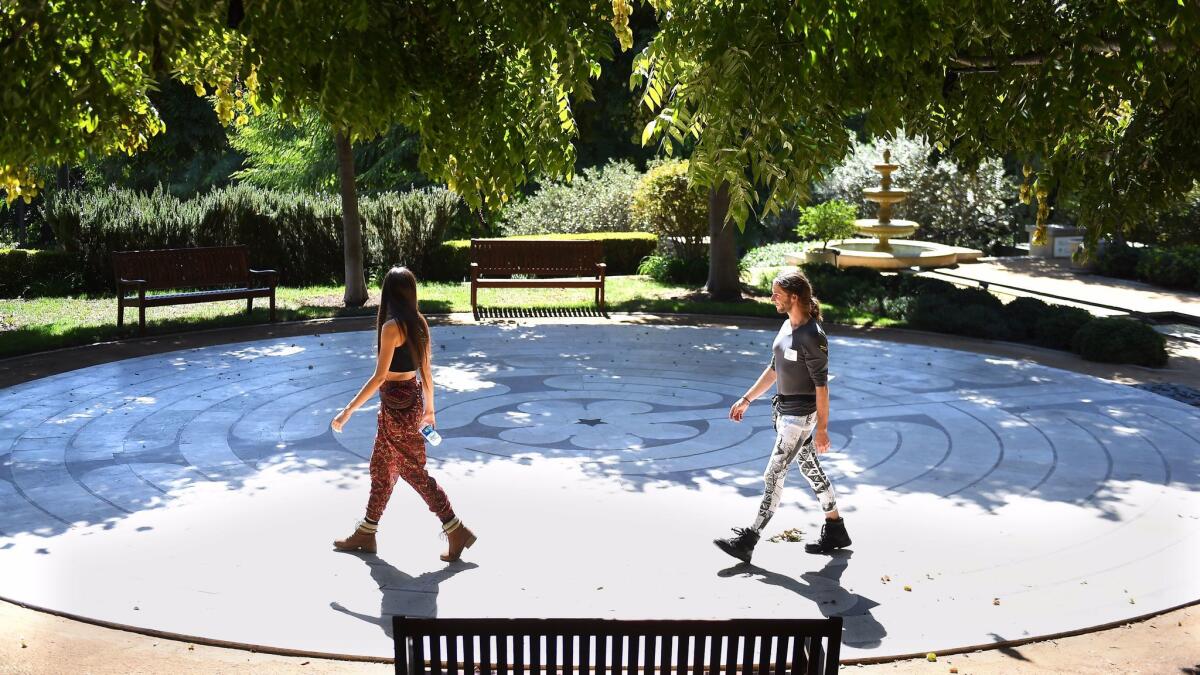
Amy Carnes was among the hundreds who packed Holman United Methodist Church in Jefferson Park on a recent Saturday to express their frustration.
Carnes said the noise frequently kept her from going outside and playing with her kids. Her husband, Joel, said in a later interview that he had been repeatedly jolted out of his sleep at night, like “some sort of Gitmo sleep deprivation study,” referring to the Guantanamo Bay military prison. They have started to weigh whether to move out of their 25th Street home.
“We had no idea that this was coming at us,” she said. “It’s a superhighway above our heads.”
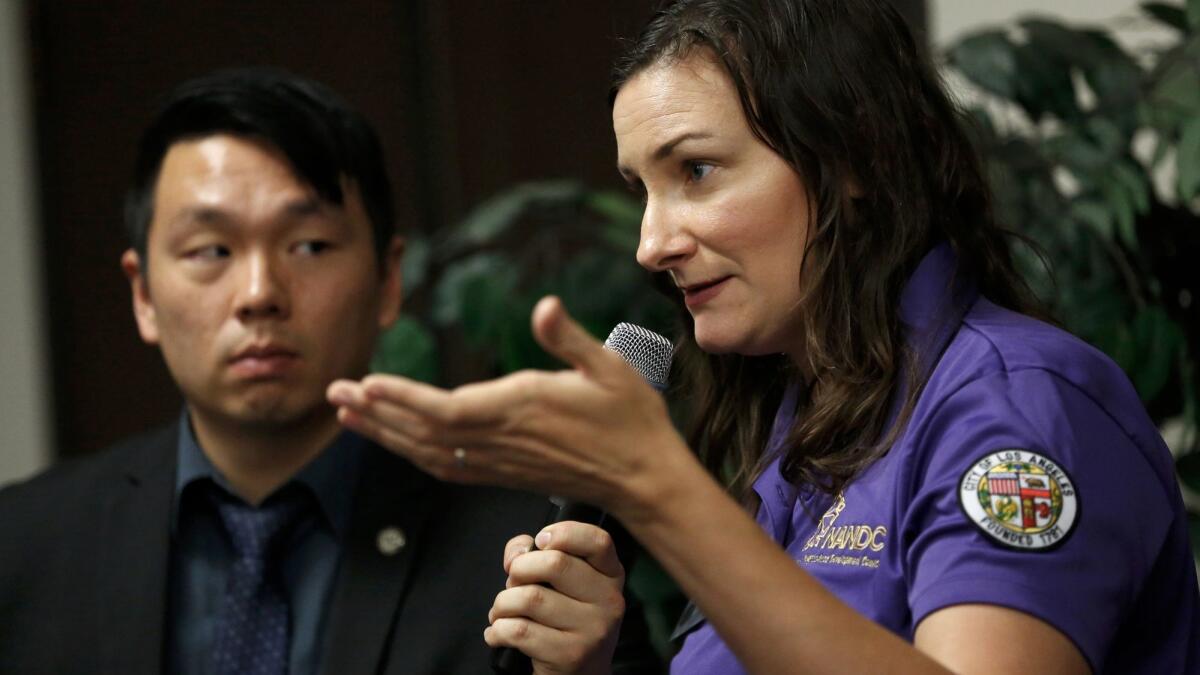
Ryan Andrus, who lives a few blocks from the church, lodges noise complaints daily on an airport website. He likened the sound to “a neighbor starting up a leaf blower, running it for 30 seconds, and doing that every three minutes for the rest of your life.”
Under FAA procedures that accompanied the new system, airplanes are not supposed to dip below minimum altitudes at a string of “waypoints” as they descend toward LAX. In the past, there were no such altitude restrictions as planes descended over South L.A. east of Santa Monica, according to the FAA.
But local lawmakers say that airplanes are flying much lower than they are supposed to, exacerbating the problem for those who live below.
“This has nothing to do with the pilots — they follow the instructions of air traffic control,” said Denny Schneider, chairman of the LAX Community Noise Roundtable, a volunteer group that has repeatedly raised concerns about noise from low-flying planes. “It’s all up to the FAA to do this.”
Flight data provided by Los Angeles World Airports show that in July, 67% of incoming airplanes were flying lower than the minimum altitude of 6,000 feet at a West Adams waypoint. Though many planes had flown under that altitude in the past, they used to be spread out over a much wider path. In a recent letter to the FAA, L.A. City Council members Herb Wesson, Marqueece Harris-Dawson and Mike Bonin said the federal agency needed to start following its own rules.
FAA spokesman Ian Gregor declined to comment specifically about concerns over noise and flight altitudes. Last year, the agency declared that the Southern California Metroplex “would not result in significant noise impacts or reportable noise increases.”
Those findings have been challenged in court by Newport Beach and Culver City, and “the parties are currently participating in a confidential, court-ordered mediation,” Gregor wrote in an email.
“The FAA is focused on identifying and exploring common ground that may address the petitioners’ concerns, while being mindful that airspace and air traffic procedures are highly dependent upon each other within the National Airspace System, and must be evaluated collectively to ensure safety and efficiency,” Gregor added.
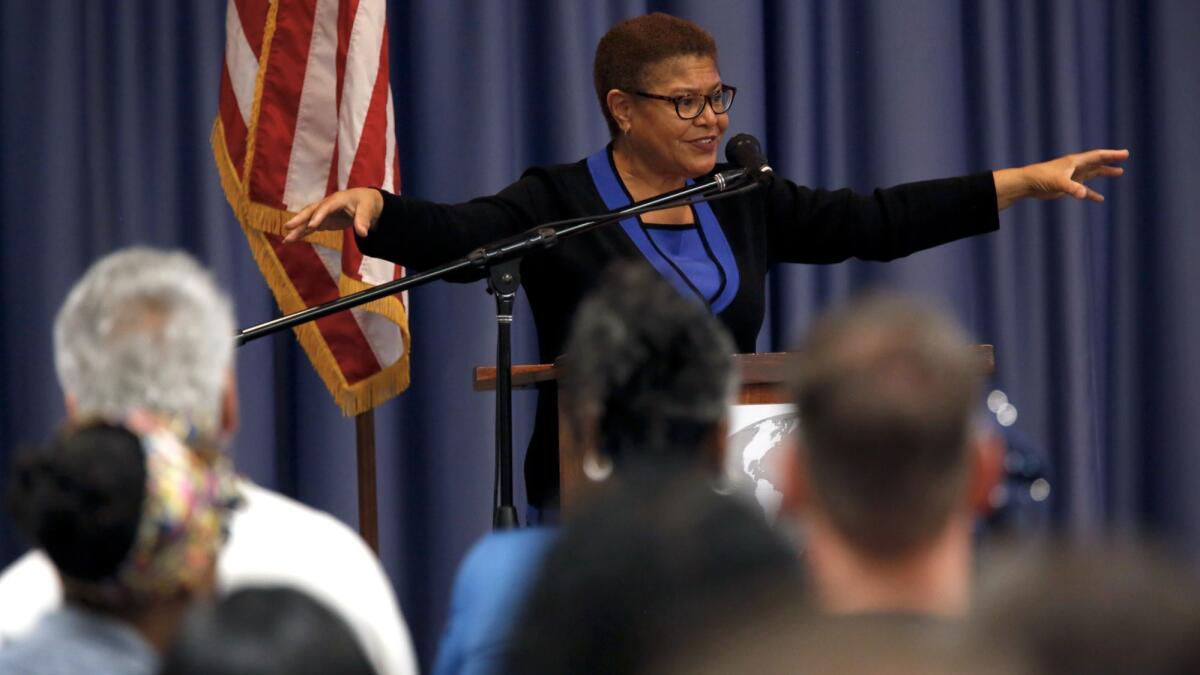
The agency says it held nearly a dozen public workshops about the planned changes after it released its draft environmental assessment of the project two years ago and organized dozens of briefings for community groups and officials. In a video about the new system, it indicated that jets and airplanes might diverge from the Metroplex routes — and their assigned altitudes — due to weather and air traffic.
In a letter to the FAA, Schneider noted that planes are routinely flying low over West Adams at night, when there are far fewer flights and “no possible excuse” for not flying at a higher altitude. The FAA has proposed adding a new 6,000-foot minimum altitude requirement for a waypoint further east in South L.A., but residents are dubious it will help.
City officials have stressed that they have little power over the problem. “We are handcuffed in the city of Los Angeles,” Mayor Eric Garcetti told KABC 7 earlier this year. “We don’t have power over flight paths … that’s something that’s just in the federal jurisdiction.”
Garcetti spokesman Alex Comisar said that community concerns are being relayed to the FAA, and the mayor “will continue doing everything he can to help make their voices heard.”
Andrus and other residents argue that L.A. could join other cities that have taken the FAA to court. At the meeting at Holman United Methodist Church, Wesson and Harris-Dawson said they were open to the idea, although Wesson spokeswoman Caolinn Mejza later added it was “not our ideal solution.”
But even a court victory may not guarantee swift action. In Arizona, Phoenix successfully sued over the changes to the flight paths but was given no estimate for when they might change. West Adams resident Michael Salman pointed out that in the San Francisco Bay Area, residents have spurred the FAA to reexamine flight paths without even going to court.
In Arizona, “they’re going back to square one — to argue about what the procedures should be,” Salman said. “Why not just start there to begin with?”
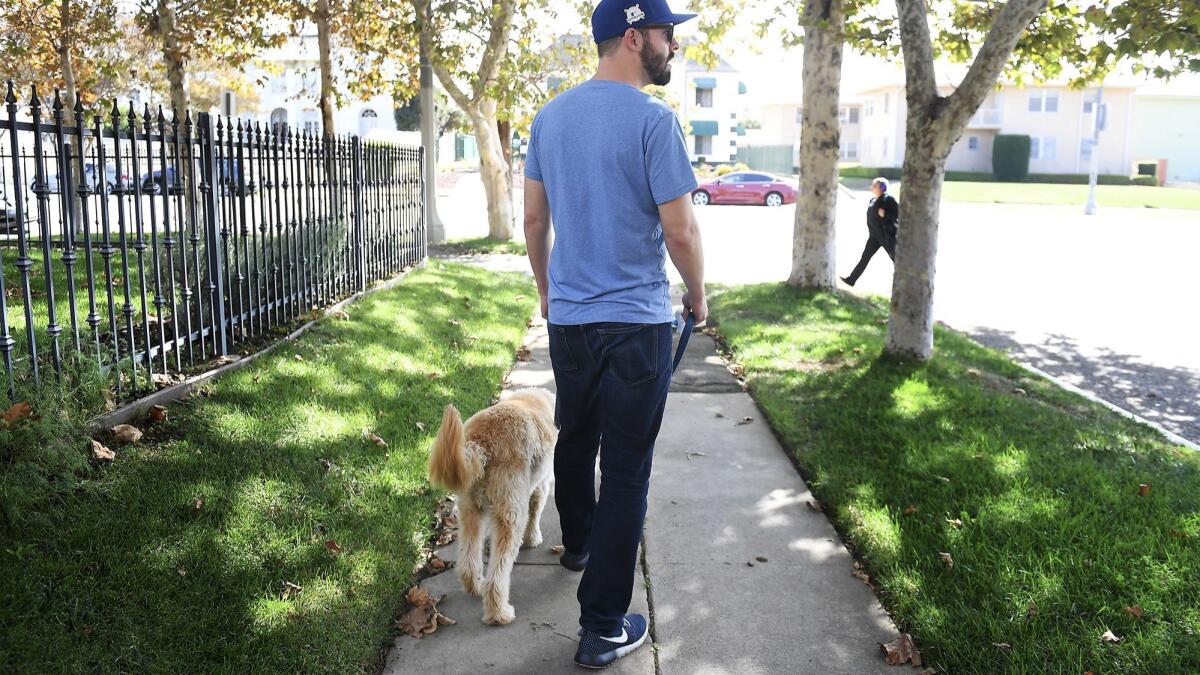
Twitter: @LATimesEmily
ALSO
State prison guards kill inmate, wound another as they try to break up fight
Southern California prepares for more hot weather and extreme fire danger
Threatening messages from Suge Knight left ‘Straight Outta Compton’ director terrified
More to Read
Sign up for Essential California
The most important California stories and recommendations in your inbox every morning.
You may occasionally receive promotional content from the Los Angeles Times.











